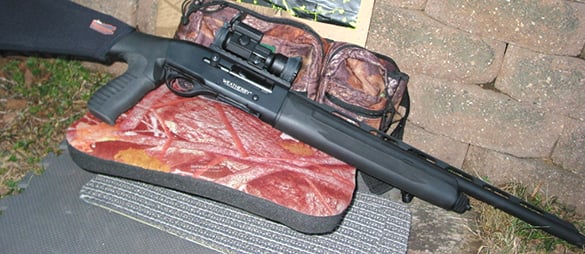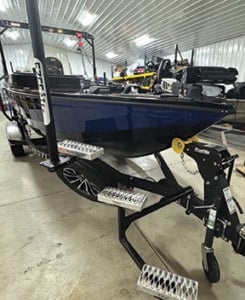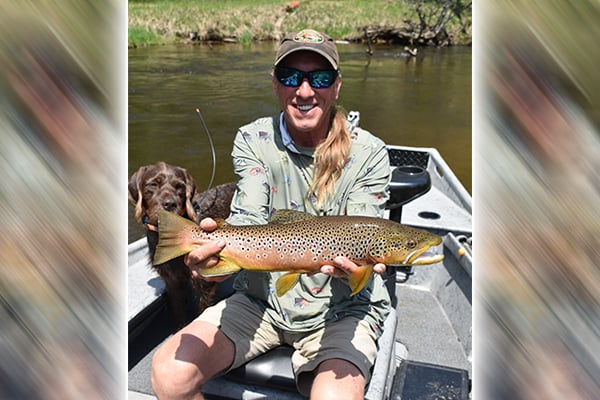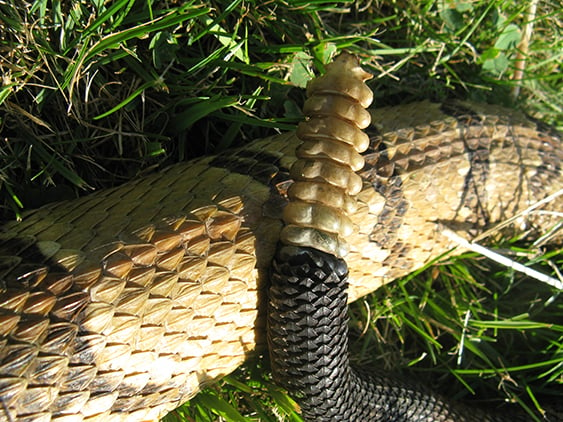Time for a new turkey gun? Here’s what to consider – Outdoor News
Outdoor News may earn revenue from products shown on this page by participating in affiliate programs. Click here to learn more.
An avid hunter friend was among the first to tag a gobbler when spring hunts began in central Wisconsin nearly four decades ago.
Back then, the conventional wisdom regarding a firearm was, “bigger is better.” So he borrowed a 10-gauge side-by-side double loaded with 3-1⁄2-inch shells stuffed with No. 4 lead pellets. It got the job done – but with 32-inch barrels and weighing almost a dozen pounds.
During the ensuing decades, turkey hunting has progressed light years, and the selection of top-performing shotguns designed especially for turkey hunting continues to expand and evolve.

Sorting through the gauges
When Federal introduced the 3.5-inch, 12-gauge magnum waterfowl loads (which could hold more and larger steel pellets), the longer hull was soon loaded with heavy charges of lead shot for turkey hunting.
The availability of popular model, from nearly every shotgun manufacturer and chambered for 3.5-inch, 12-gauge loads virtually eliminated 10-gauge guns from consideration by turkey hunters.
Despite the apparent advantages of the 3.5-inch shells, during several seasons of pursuing gobblers, I’ve been successful using 3-inch, 12-gauge loads at ranges from 15 yards out to 55 yards.
MORE TURKEY COVERAGE FROM OUTDOOR NEWS:
Take your digital mapping to the next level
Commentary: Make the turkey Wisconsin’s official state game bird
Passion for muzzleloading? Don’t limit your hunting to deer season
I suspect I could have done just as well by using suitable 23⁄4-inch shells. But because 3-inch ammo has patterned well in my turkey shotguns, I’ve continued to stay with it.
The advent of ammunition loaded with TSS (Tungsten Super Shot) pellets has been a game-changer, enabling 20- and 28-gauge guns, and even .410 bore models, to be solid turkey guns.
RELATED STORY FROM OUTDOOR NEWS:
Dave Zeug: A .410 is the real deal in the turkey woods
Remember, as the bore size decreases, so does the pellet count of the ammunition, making it vitally important to maintain a tight, uniform shot pattern.
Hunters using 20- and 28-gauge guns with TSS ammo can still expect to connect with killing shots out to 40 yards and a bit beyond. However, if I were hunting with a .410 bore, I’d restrict my shots to 30 yards, maybe less. Before buying a 28 gauge or .410, check to make sure its use is legal in your state.

Picking the action
Virtually every company that makes, or imports, shotguns, offers special-purpose turkey models, available as pump-action, semi-automatics, over/under models, single-shot break-action, or bolt-action. Street prices range from around $300 to more than $3,000.
Pump guns are among the most practical and versatile. They’re simple to operate, dependable under varying field conditions, less expensive than autoloaders and double guns, and will easily cycle heavy and light loads.
My first turkey gun was a 12-gauge Browning BPS Game Gun that came with a 20-inch barrel, rifled choke tube, and extra-full turkey choke. That pump gun was deadly on deer and perfect for turkeys, accounting for several bucks and numerous gobblers. It was the one gun I thought I would never sell. But a few years ago, I somehow thought I needed a lighter semi-auto than the 8.5-pound pump.
I traded the pump for a Weatherby autoloader that was 1.5 pounds lighter. After experiencing a few twinges of seller’s remorse, and adding a comb riser and red-dot optic, I felt confident in taking it afield, and dropped a gobbler just 10 paces from the muzzle. I appreciated its 22-inch barrel, 13.5-inch stock, and tactical pistol grip.
Recently, I’ve moved on to a Mossberg 940 Turkey Pro autoloader, a feature-packed gun that has become popular with turkey hunters across the country. It has easily cycled all the 12-gauge ammo I’ve tried, from heavy turkey loads to light target loads, with no adjustments needed.
It’s customizable stock allows for an excellent fit. A cutout at the rear of the receiver enables easy installation of a reflex optic sight. Both autoloaders delivered less perceived recoil than my pump, because the gas-operated action uses some of the recoil to cycle the next round.
You can make a good case for heading afield with an over/under turkey shotgun. You can have a modified choke tube in one barrel for birds that come in close, and an extra-full choke to cleanly shoot more distant gobblers. Lacking the additional length of a pump or autoloader receiver, an O/U can be compact even with 26-inch barrels.
Single-shot, break-action turkey guns have been gaining in popularity because they are light, short, and easy to maneuver. While most of my turkeys have required only one shot, I like having a quick second shot available if needed.

Proper fit and finish
The key to success with any shotgun is having one that properly fits the shooter.
A proper-fitting turkey gun is often far different from a shotgun designed for wingshooting. Barrels on turkey shotguns generally range in length from 18.5 to 24 inches. My current gun has a 24-inch barrel, which is the maximum practical length on a pump or autoloader.
When you’re in a tent blind, or outside surrounded by vines, saplings, or briars, you do not want to be swinging a long-barreled gun. One morning, I carried a shotgun into my blind. That gun had a 28-inch barrel and an overall length of 49 inches. Suffice it to say it did not go well.
You might also need a shorter stock on a turkey gun. Most general-purpose shotguns come with stocks that have a length of pull of 14 inches or longer.
When you’re sitting scrunched up at the base of a tree, you do not have as much reach as you may when standing up and shooting at flying birds in a pheasant field. You’ll appreciate having a shorter stock. I’ve shortened my stock to 13.5 inches, while raising the comb 1⁄8 of an inch.
Selecting a shotgun that you can shoot well also involves weight and recoil. I prefer a weight of 7 to 7.5 pounds for a 12-gauge gun, a pound or so lighter for 20- and 28-gauge guns, and 5.5 to 6 pounds for the .410 bore. You may have to increase the weight depending on your tolerance for recoil.
Most current turkey shotguns feature some type of camouflage finish, but I’ve used guns with stocks and barrels with a matte finish, and had no instances of spooking birds.
Accessories
Because turkey shotguns are generally aimed at a stationary gobbler rather than swinging on flushing pheasants or decoying ducks, they should have sights that are more precise than metal beads.
Many shotguns designed for turkey hunting now come with a single green or orange fiber optic sight mounted on the front of the barrel. Some may also have fiber optic rear sights.
Based on my experience, optical sights are best for centering a tight shot pattern on the gobbler’s head and neck. A Burris 2.5X scope on my Browning pump worked well, offering a wide field of view for birds that snuck in close, as well as a precise aiming point for gobblers out beyond 40 yards.
When I centered a Vortex Strikefire red dot on a gobbler’s neck as he exited the woods, a load of No. 6 shot dropped him 10 paces from the muzzle of my Weatherby semi-automatic. My current turkey shotgun has a Holosun reflex sight mounted on the receiver cutout.
Most turkey shotguns come with an extended extra-full choke tube. If it’s not producing the desired patterns, try different ammo, or an aftermarket choke tube.
A low-cost, but important, accessory for your turkey shotgun is a sling that will make for easy carrying of your gun while freeing up your hands for carrying decoys and other hunting gear. Most turkey shotguns have sling swivel studs, so a sling can be easily attached or removed.
Regardless of which gauge or action you choose, a turkey shotgun must be able to consistently put a sufficient number of pellets hard enough to break bones into a turkey’s head and neck.
Source: https://www.outdoornews.com/2025/02/06/time-for-a-new-turkey-gun-heres-what-to-consider/







